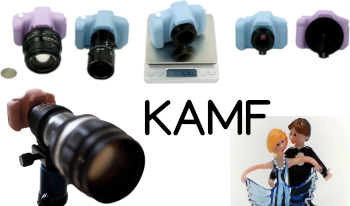
Very low cost consumer-oriented commodity products often can be modified to support more sophisticated uses. The current work explores a variety of ways in which any of a family of small rechargeable-battery stand-alone cameras, intended for use of kids as young as three years old, can be modified to support more sophisticated use. Unfortunately, the image quality and exposure controls available are similar to what would be found in a cheap webcam; to be precise, the camera contains two separate camera modules each comparable to a webcam. However, simple modifications convert these toys into interchangeable-lens mirrorless cameras accepting lenses in a variety of standard mounts. Cameras so modified can capture full spectrum images or can employ a filter providing any desired spectral sensitivity profile. One also has limited access to the internals of the camera, easily allowing options like wiring to an external exposure trigger. The cameras record on a TF card, and typically a 32GB or 64GB card is included with the camera at a total cost virtually identical to the cost of the TF card alone. The current work can be considered as both a study revealing the internal construction of a kids camera and a guide to adapting it for more serious uses as the KAMF mirrorless camera.